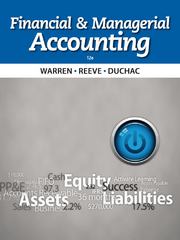The beginning inventory for Midnight Supplies and data on purchases and sales for a three month period are as follows: Date Transaction Number of Units
The beginning inventory for Midnight Supplies and data on purchases and sales for a three month period are as follows: Date Transaction Number of Units Per Unit Total Jan. 1 Inventory 7,500 $ 75.00 $ 562,500 10 Purchase 22,500 85.00 1,912,500 28 Sale 11,250 150.00 1,687,500 30 Sale 3,750 150.00 562,500 Feb. 5 Sale 1,500 150.00 225,000 10 Purchase 54,000 87.50 4,725,000 16 Sale 27,000 160.00 4,320,000 28 Sale 25,500 160.00 4,080,000 Mar. 5 Purchase 45,000 89.50 4,027,500 14 Sale 30,000 160.00 4,800,000 25 Purchase 7,500 90.00 675,000 30 Sale 26,250 160.00 4,200,000 Instructions 1. Determine the inventory on March 31 and the cost of goods sold for the three-month period, using the first-in, first-out method and the periodic inventory system. 2. Determine the inventory on March 31 and the cost of goods sold for the three-month period, using the last-in, first-out method and the periodic inventory system. 3. Determine the inventory on March 31 and the cost of goods sold for the three-month period, using the weighted average cost method and the periodic inventory system. Round the weighted average unit cost to the nearest cent and use that amount in subsequent computations. 4. Compare the gross profit and the March 31 inventories. FIFO;- The beginning inventory for Midnight Supplies and data on purchases and sales for a three month period are as follows: Date Transaction Number of Units Per Unit Total Jan. 1 Inventory 7,500 $ 75.00 $ 562,500 10 Purchase 22,500 85.00 1,912,500 28 Sale 11,250 150.00 1,687,500 30 Sale 3,750 150.00 562,500 Feb. 5 Sale 1,500 150.00 225,000 10 Purchase 54,000 87.50 4,725,000 16 Sale 27,000 160.00 4,320,000 28 Sale 25,500 160.00 4,080,000 Mar. 5 Purchase 45,000 89.50 4,027,500 14 Sale 30,000 160.00 4,800,000 25 Purchase 7,500 90.00 675,000 30 Sale 26,250 160.00 4,200,000 Instructions 1. Determine the inventory on March 31 and the cost of goods sold for the three-month period, using the first-in, first-out method and the periodic inventory system. 2. Determine the inventory on March 31 and the cost of goods sold for the three-month period, using the last-in, first-out method and the periodic inventory system. 3. Determine the inventory on March 31 and the cost of goods sold for the three-month period, using the weighted average cost method and the periodic inventory system. Round the weighted average unit cost to the nearest cent and use that amount in subsequent computations. 4. Compare the gross profit and the March 31 inventories. 2. Determine the inventory on March 31 and the cost of goods sold for the three-month period, using the last-in, first-out method and the periodic inventory system. Inventory, March 31 Cost of goods sold Points: 0 / 2 Check My Work 2. Note that the periodic inventory system is used in this problem. LIFO means the last units purchased are assumed to be the first to be sold. Therefore the ending inventory for the period is made up of the earliest costs from the period (the beginning inventory). If the number of units in the ending inventory is greater than the units in the beginning inventory, the excess units will be recorded at the next oldest cost associated with the first purchase. The cost of merchandise sold for the period can be calculated by subtracting the ending inventory from the total cost of goods available for sale. 3. Determine the inventory on March 31 and the cost of goods sold for the three-month period, using the weighted average cost method and the periodic inventory system. Round the weighted average unit cost to the nearest cent and use that amount in subsequent computations. Inventory, March 31 Cost of goods sold Points: 0 / 2 Check My Work 3. Note that the periodic inventory system is used in this problem. The weighted average cost means the average cost of all available units purchased is applied to the number of units sold and those in ending inventory. Therefore, you must first obtain a unit cost by dividing the total cost of all units available for sale by the number of units available for sale. Then multiply the number of items remaining in the physical inventory times this unit cost. The cost of merchandise sold for the period can be calculated by subtracting the ending inventory from the total cost of goods available for sale. 4. Compare the gross profit and the March 31 inventories, using the following column headings. Question not attempted. Score: 0/45 1 FIFO LIFO Weighted Average 2 Sales 3 Cost of goods sold 4 Gross profit 5 6 Inventory, March 31 Points: 0 / 12 Check My Work 4. Recall that FIFO reports higher gross profit, net income, and inventory than the LIFO method when costs (prices) are increasing. The weighted average reports gross profit, net income, and inventory between that of FIFO and LIFO.
Step by Step Solution
There are 3 Steps involved in it
Step: 1

See step-by-step solutions with expert insights and AI powered tools for academic success
Step: 2

Step: 3

Ace Your Homework with AI
Get the answers you need in no time with our AI-driven, step-by-step assistance
Get Started


